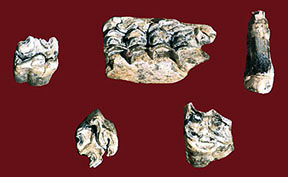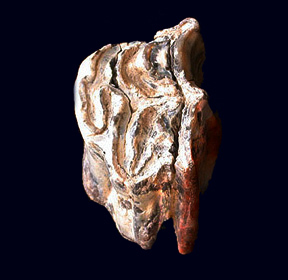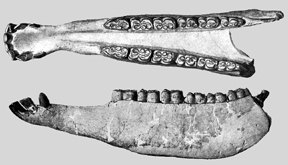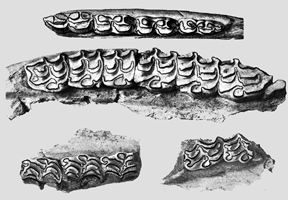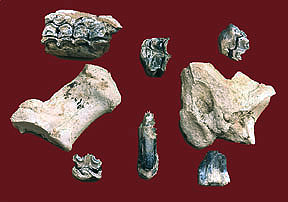 |
Click on the image for a larger picture. Here are some fossil teeth and a couple of limb bone fragments from the Pliocene Coso Formation. All specimens came from the extinct one-toed Pliocene horse, called scientifically, Eguus simplicidens (it still retained vestiges of two side toes from earlier three-toed horses)--this is the famed Hagerman Horse, named for its spectacular occurrence at Hagerman Fossil Beds National Monument in Idaho, a species that vertebrate paleontologists consider the earliest member of the genus Equus, includes all present-day equids, such as modern horses, zebras, Grévy-zebras, wild asses, the Asiatic wild ass and the Przewalski horses; it appears to have been about the size of a modern Arabian horse with a decidedly zebra-like body, in general appearance--as a matter of fact, the Hagerman Horse is now believed to have been more closely related to the modern Grevy Zebra than to a horse. Specimens are roughly three million years old. For scale, the horse jaw segment at upper left is 70 millimeters long. |
